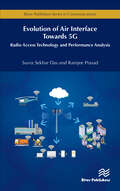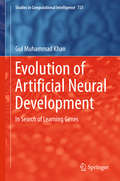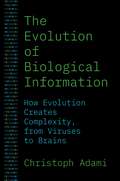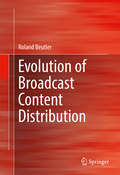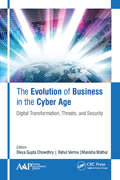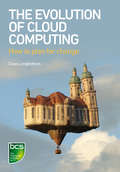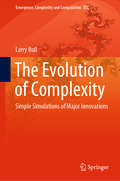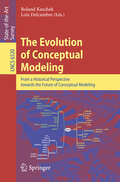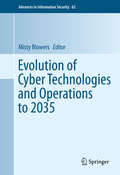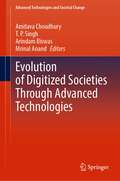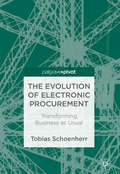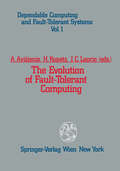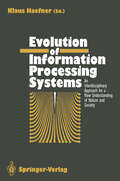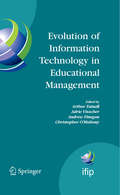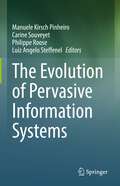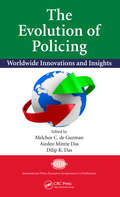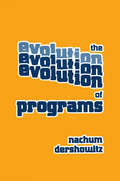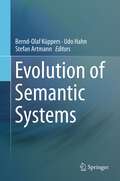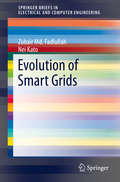- Table View
- List View
Evolution of Air Interface Towards 5G
by Suvra Sekhar DasOver the past few decades, wireless access networks have evolved extensively to support the tremendous growth of consumer traffic. This superlative growth of data consumption has come about due to several reasons, such as evolution of the consumer devices, the types of telephone and smartphone being used, convergence of services, digitisation of economic transactions, tele-education, telemedicine, m-commerce, virtual reality office, social media, e-governance, e-security, to name but a few.Not only has the society transformed to a digital world, but also the expectations from the services provided have increased many folds. The last mile/meters of delivery of all e-services is now required to be wireless. It has always been known that wireless links are the bottleneck to providing high data rates and high quality of service. Several wireless signalling and performance analysis techniques to overcome the hurdles of wireless channels have been developed over the last decade, and these are fuelling the evolution of 4G towards 5G. Evolution of Air Interface Towards 5G attempts to bring out some of the important developments that are contributing towards such growth.
Evolution of Air Interface Towards 5G
by Suvra Sekhar DasOver the past few decades, wireless access networks have evolved extensively to support the tremendous growth of consumer traffic. This superlative growth of data consumption has come about due to several reasons, such as evolution of the consumer devices, the types of telephone and smartphone being used, convergence of services, digitisation of economic transactions, tele-education, telemedicine, m-commerce, virtual reality office, social media, e-governance, e-security, to name but a few.Not only has the society transformed to a digital world, but also the expectations from the services provided have increased many folds. The last mile/meters of delivery of all e-services is now required to be wireless. It has always been known that wireless links are the bottleneck to providing high data rates and high quality of service. Several wireless signalling and performance analysis techniques to overcome the hurdles of wireless channels have been developed over the last decade, and these are fuelling the evolution of 4G towards 5G. Evolution of Air Interface Towards 5G attempts to bring out some of the important developments that are contributing towards such growth.
Evolution of Artificial Neural Development: In search of learning genes (Studies in Computational Intelligence #725)
by Gul Muhammad KhanThis book presents recent research on the evolution of artificial neural development, and searches for learning genes. It is fascinating to see how all biological cells share virtually the same traits, but humans have a decided edge over other species when it comes to intelligence. Although DNA decides the form each particular species takes, does it also account for intelligent behaviour in living beings? The authors explore the factors that are perceived as intelligent behaviour in living beings and the incorporation of these factors in machines using genetic programming, which ultimately provides a platform for exploring the possibility of machines that can learn by themselves, i.e. that can “learn how to learn”. The book will be of interest not only to the specialized scientific community pursuing machine intelligence, but also general readers who would like to know more about the incorporation of intelligent behaviour in machines, inspired by the human brain.
The Evolution of Biological Information: How Evolution Creates Complexity, from Viruses to Brains
by Christoph AdamiWhy information is the unifying principle that allows us to understand the evolution of complexity in natureMore than 150 years after Darwin&’s revolutionary On the Origin of Species, we are still attempting to understand and explain the amazing complexity of life. Although we now know how evolution proceeds to build complexity from simple ingredients, quantifying this complexity is still a difficult undertaking. In this book, Christoph Adami offers a new perspective on Darwinian evolution by viewing it through the lens of information theory. This novel theoretical stance sheds light on such matters as how viruses evolve drug resistance, how cells evolve to communicate, and how intelligence evolves. By this account, information emerges as the central unifying principle behind all of biology, allowing us to think about the origin of life—on Earth and elsewhere—in a systematic manner.Adami, a leader in the field of computational biology, first provides an accessible introduction to the information theory of biomolecules and then shows how to apply these tools to measure information stored in genetic sequences and proteins. After outlining the experimental evidence of the evolution of information in both bacteria and digital organisms, he describes the evolution of robustness in viruses; the cooperation among cells, animals, and people; and the evolution of brains and intelligence. Building on extensive prior work in bacterial and digital evolution, Adami establishes that (expanding on Dobzhansky&’s famous remark) nothing in biology makes sense except in the light of information. Understanding that information is the foundation of all life, he argues, allows us to see beyond the particulars of our way of life to glimpse what life might be like in other worlds.
Evolution of Broadcast Content Distribution
by Roland BeutlerThis book discusses opportunities for broadcasters that arise with the advent of broadband networks, both fixed and mobile. It discusses how the traditional way of distributing audio-visual content over broadcasting networks has been complemented by the usage of broadband networks. The author shows how this also gives the possibility to offer new types of interactive or so-called nonlinear services. The book illustrates how change in distribution technology is accelerating the need for broadcasters around the world to adapt their content distribution strategy and how it will impact the portfolios of content they offer.
The Evolution of Business in the Cyber Age: Digital Transformation, Threats, and Security
by Divya Gupta Chowdhry Rahul Verma Manisha MathurThis book has a two-fold mission: to explain and facilitate digital transition in business organizations using information and communications technology and to address the associated growing threat of cyber crime and the challenge of creating and maintaining effective cyber protection.The book begins with a section on Digital Business Transformation, which includes chapters on tools for integrated marketing communications, human resource workplace digitalization, the integration of the Internet of Things in the workplace, Big Data, and more. The technologies discussed aim to help businesses and entrepreneurs transform themselves to align with today’s modern digital climate. The Evolution of Business in the Cyber Age: Digital Transformation, Threats, and Security provides a wealth of information for those involved in the development and management of conducting business online as well as for those responsible for cyber protection and security. Faculty and students, researchers, and industry professionals will find much of value in this volume.
The Evolution of Business in the Cyber Age: Digital Transformation, Threats, and Security
by Divya Gupta Chowdhry Rahul Verma Manisha MathurThis book has a two-fold mission: to explain and facilitate digital transition in business organizations using information and communications technology and to address the associated growing threat of cyber crime and the challenge of creating and maintaining effective cyber protection.The book begins with a section on Digital Business Transformation, which includes chapters on tools for integrated marketing communications, human resource workplace digitalization, the integration of the Internet of Things in the workplace, Big Data, and more. The technologies discussed aim to help businesses and entrepreneurs transform themselves to align with today’s modern digital climate. The Evolution of Business in the Cyber Age: Digital Transformation, Threats, and Security provides a wealth of information for those involved in the development and management of conducting business online as well as for those responsible for cyber protection and security. Faculty and students, researchers, and industry professionals will find much of value in this volume.
The Evolution of Cloud Computing: How to plan for change
by Clive LongbottomCloud computing has been positioned as today's ideal IT platform. However, this has been said before of other IT architectures. How is cloud different? This book looks at what cloud promises now, and how cloud is likely to evolve as the future unfolds. Readers will be better able to ensure that decisions made now will hold them in good stead for the future and will gain a better understanding of how cloud can deliver the best outcome for their organisations.
The Evolution of Cloud Computing: How to plan for change
by Clive LongbottomCloud computing has been positioned as today's ideal IT platform. However, this has been said before of other IT architectures. How is cloud different? This book looks at what cloud promises now, and how cloud is likely to evolve as the future unfolds. Readers will be better able to ensure that decisions made now will hold them in good stead for the future and will gain a better understanding of how cloud can deliver the best outcome for their organisations.
Evolution of Communication and Language in Embodied Agents
by Stefano Nolfi Marco MirolliThis field of research examines how embodied and situated agents, such as robots, evolve language and thus communicate with each other. This book is a comprehensive survey of the research in this emerging field. The contributions explain the theoretical and methodological foundations of the field, and then illustrate the scientific and technological potentials and promising research directions. The book also provides descriptions of research experiments and related open software and hardware tools, allowing the reader to gain a practical knowledge of the topic. The book will be of interest to scientists and undergraduate and graduate students in the areas of cognition, artificial life, artificial intelligence and linguistics.
The Evolution of Complexity: Simple Simulations of Major Innovations (Emergence, Complexity and Computation #37)
by Larry BullThis book gathers together much of the author’s work – both old and new - to explore a number of the key increases in complexity seen in the natural world, seeking to explain each of them purely in terms of the features of fitness landscapes. In a very straightforward manner, the book introduces basic concepts to help readers follow the main ideas. By using variations of the NK model and including the concept of the Baldwin effect, the author presents new abstract models that are able to explain why sources of evolutionary innovation (genomes, symbiosis, sex, chromosomes, multicellularity) have been selected for and hence how complexity has increased over time in some lineages.
The Evolution of Conceptual Modeling: From a Historical Perspective towards the Future of Conceptual Modeling (Lecture Notes in Computer Science #6520)
by Roland Kaschek Lois M. L. DelcambreConceptual modeling represents a recent approach to creating knowledge. It has emerged in response to the computer revolution, which started in the middle of the 20th century.Computers, in the meantime, have become a major knowledge media. Conceptual modeling provides an answer to the difficulties experienced throughout the development of computer applications and aims at creating effective, reasonably priced, and sharable knowledge about using computers in business. Moreover, it has become evident that conceptual modeling has the potential to exceed the boundaries of business and computer usage.This state-of-the-art survey originates from the International Seminar on the Evolution of Conceptual Modeling, held in Dagstuhl Castle, Germany, in April 2008. The major objective of this seminar was to look into conceptual modeling from a historical perspective with a view towards the future of conceptual modeling and to achieve a better understanding of conceptual modeling issues in several different domains of discourse, going beyond individual (modeling) projects.The book contains 14 chapters. These were carefully selected during two rounds of reviewing and improvement from 26 presentations at the seminar and are preceded by a detailed preface providing general insights into the field of conceptual modeling that are not necessarily discussed in any of the chapters but nevertheless aid in conceptualizing the inner structure and coherence of the field. The chapters are grouped into the following three thematic sections: the evolution of conceptual modeling techniques; the extension of conceptual modeling to a service-oriented, peer-to-peer, or Web context; and new directions for conceptual modeling.
Evolution of Cyber Technologies and Operations to 2035 (Advances in Information Security #63)
by Misty BlowersThis book explores the future of cyber technologies and cyber operations which will influence advances in social media, cyber security, cyber physical systems, ethics, law, media, economics, infrastructure, military operations and other elements of societal interaction in the upcoming decades. It provides a review of future disruptive technologies and innovations in cyber security. It also serves as a resource for wargame planning and provides a strategic vision of the future direction of cyber operations. It informs military strategist about the future of cyber warfare. Written by leading experts in the field, chapters explore how future technical innovations vastly increase the interconnectivity of our physical and social systems and the growing need for resiliency in this vast and dynamic cyber infrastructure. The future of social media, autonomy, stateless finance, quantum information systems, the internet of things, the dark web, space satellite operations, and global network connectivity is explored along with the transformation of the legal and ethical considerations which surround them. The international challenges of cyber alliances, capabilities, and interoperability is challenged with the growing need for new laws, international oversight, and regulation which informs cybersecurity studies. The authors have a multi-disciplinary scope arranged in a big-picture framework, allowing both deep exploration of important topics and high level understanding of the topic. Evolution of Cyber Technologies and Operations to 2035 is as an excellent reference for professionals and researchers working in the security field, or as government and military workers, economics, law and more. Students will also find this book useful as a reference guide or secondary text book.
Evolution of Digitized Societies Through Advanced Technologies (Advanced Technologies and Societal Change)
by Amitava Choudhury T. P. Singh Arindam Biswas Mrinal AnandThis book provides an understanding of the evolution of digitization in our day to day life and how it has become a part of our social system. The obvious challenges faced during this process and how these challenges were overcome have been discussed. The discussions revolve around the solutions to these challenges by leveraging the use of various advanced technologies. The book mainly covers the use of these technologies in variety of areas such as smart cities, healthcare informatics, transportation automation, digital transformation of education. The book intends to be treated as a source to provide the systematic discussion to the bouquet of areas that are essential part of digitized societies. In light of this, the book accommodates theoretical, methodological, well-established, and validated empirical work dealing with various related topics.
The Evolution of Electronic Procurement: Transforming Business as Usual
by Tobias SchoenherrThis book responds to the increasing speed with which the domain of electronic procurement has been evolving, as well to the significant advances predicted to take place in the near future. Covering the fundamentals of electronic procurement as well as advanced applications, the main focus is on the critical importance of information technology for modern supply management professionals. Tracing the evolution of electronic procurement over the last 20 years, the book illustrates how the concept has evolved from a novel idea into a standard approach that cannot be neglected, fundamentally transforming business as usual. The transformation is highlighted by the evolution of online reverse auctions, as well as the ensuing expansion of technology to virtually all aspects of strategic sourcing in the form of integrated electronic sourcing suites. Several advances and new applications of electronic procurement are presented, with an emphasis on how social media can be leveraged for supply management and its associated significant potential.
The Evolution of Electronic Procurement: Transforming Business as Usual
by Tobias SchoenherrThis book responds to the increasing speed with which the domain of electronic procurement has been evolving, as well to the significant advances predicted to take place in the near future. Covering the fundamentals of electronic procurement as well as advanced applications, the main focus is on the critical importance of information technology for modern supply management professionals. Tracing the evolution of electronic procurement over the last 20 years, the book illustrates how the concept has evolved from a novel idea into a standard approach that cannot be neglected, fundamentally transforming business as usual. The transformation is highlighted by the evolution of online reverse auctions, as well as the ensuing expansion of technology to virtually all aspects of strategic sourcing in the form of integrated electronic sourcing suites. Several advances and new applications of electronic procurement are presented, with an emphasis on how social media can be leveraged for supply management and its associated significant potential.
The Evolution of Fault-Tolerant Computing: In the Honor of William C. Carter (Dependable Computing and Fault-Tolerant Systems #1)
by A. Avizienis H Kopetz J. C. LaprieFor the editors of this book, as well as for many other researchers in the area of fault-tolerant computing, Dr. William Caswell Carter is one of the key figures in the formation and development of this important field. We felt that the IFIP Working Group 10.4 at Baden, Austria, in June 1986, which coincided with an important step in Bill's career, was an appropriate occasion to honor Bill's contributions and achievements by organizing a one day "Symposium on the Evolution of Fault-Tolerant Computing" in the honor of William C. Carter. The Symposium, held on June 30, 1986, brought together a group of eminent scientists from all over the world to discuss the evolu tion, the state of the art, and the future perspectives of the field of fault-tolerant computing. Historic developments in academia and industry were presented by individuals who themselves have actively been involved in bringing them about. The Symposium proved to be a unique historic event and these Proceedings, which contain the final versions of the papers presented at Baden, are an authentic reference document.
Evolution of Information Processing Systems: An Interdisciplinary Approach for a New Understanding of Nature and Society
by Klaus HaefnerAn interdisciplinary team of scientists is presenting a new paradigm: all existing structures on earth are the consequence of information processing. Since these structures have been evolved over the last five billion years, information processing and its systems have an evolution.This is under consideration in the book. Starting with a basic paper which summarizes the essential hypotheses about the evolution of informaion processing systems, sixteen international scientists have tried to verify or falsify these hypothesises. This has been done at the physical, the chemical, the genetic, the neural, the social, the societal and the socio-technical level. Thus, the reader gets an insight into the recent status of research on the evolution of information processing systems. The papers are the result of an interdisciplinary project in which scientists of the classical disciplines have been invited to collaborate. Their inputs have been intensively discussed in a workshop. The book is the output of the workshop. The first goal of the bookis to give the reader an insight into basic principles about the evolution of information processing systems. This, however, leads directly to a very old and essential question: who is controlling the world, "matter" or an "immaterial intelligence"? Several authors of the papers are arguing that there is a basic concept of information processing in nature. This is the crucial process, which, however, needs a material basis. The reader has a chance to understand this paradigm as an approach which is valid for all levels of inorganic, organic and societal structures. This provocative concept is open to debate.
Evolution of Information Technology in Educational Management (IFIP Advances in Information and Communication Technology #292)
by Andrew Finegan Christopher O'Mahony Arthur Tatnall Adrie J. VisscherEvolution of Information Technology in Educational Management As the editors of this volume we are very happy to publish a selection of the papers that were presented at the eighth Conference of Working Group 3.7 of the International Federation for Information Processing which was held in July 2008. The focus of Working Group 3.7 is on ITEM: Information Technology in Educational Management (for more information, please visit our website http://item.wceruw.org/), and the theme of its 2008 conference was on the Evolution of Information Technology in Educational Management. Our Working Group started its activities (officially we were not an IFIP Working Group at that time) in 1994 in Israel, so it made sense to look at how ITEM has evolved over the years and to reflect on what its future may be. The conference took place in Darwin (northern Australia) which even during the Australian winter is a very pleasant location for having a conference. The town of Darwin was given its name by the Captain of the Beagle (the ship on which Darwin travelled when he made the investigations on which he based his Theory of Evolution) who came to the area and named the town after the giant of science he admired.
Evolution of Knowledge Science: Myth to Medicine: Intelligent Internet-Based Humanist Machines
by Syed V. AhamedEvolution of Knowledge Science: Myth to Medicine: Intelligent Internet-Based Humanist Machines explains how to design and build the next generation of intelligent machines that solve social and environmental problems in a systematic, coherent, and optimal fashion. The book brings together principles from computer and communication sciences, electrical engineering, mathematics, physics, social sciences, and more to describe computer systems that deal with knowledge, its representation, and how to deal with knowledge centric objects. Readers will learn new tools and techniques to measure, enhance, and optimize artificial intelligence strategies for efficiently searching through vast knowledge bases, as well as how to ensure the security of information in open, easily accessible, and fast digital networks. Author Syed Ahamed joins the basic concepts from various disciplines to describe a robust and coherent knowledge sciences discipline that provides readers with tools, units, and measures to evaluate the flow of knowledge during course work or their research. He offers a unique academic and industrial perspective of the concurrent dynamic changes in computer and communication industries based upon his research. The author has experience both in industry and in teaching graduate level telecommunications and network architecture courses, particularly those dealing with applications of networks in education.Presents a current perspective of developments in central, display, signal, and graphics processor-units as they apply to designing knowledge systemsOffers ideas and methodologies for systematically extending data and object processing in computing into other disciplines such as economics, mathematics, and managementProvides best practices and designs for engineers alongside case studies that illustrate practical implementation ideas across multiple domains
The Evolution of Pervasive Information Systems
by Carine Souveyet Manuele Kirsch Pinheiro Philippe Roose Luiz Angelo SteffenelThis book covers several aspects related the evolution of Information Systems into Pervasive Information Systems. New IT trends have an important impact on IT infrastructures, which become increasingly heterogeneous, flexible, and dynamic. These new trends are transforming Information Systems into what we call Pervasive Information Systems. The purpose of this book is to combine “state-of-the-art” solutions from various research communities (such as Information Systems Engineering, Cloud Computing, Fog/Edge Computing, Pervasive systems, Distributed systems, and Middleware systems) related to the Pervasive Information Systems emergence as a common point of view. Through these multiple contributions, this book tackles important challenges concerning Information Systems evolution, promoting a holistic view of Pervasive Information System.Pervasive Information Systems (PIS) can be defined as a new class of Information Systems. It can be characterized by an IT that is gradually embedded in the physical environment and can accommodate the user’s requirements and desires when necessary. This evolution implies considering Information Systems beyond the organization's physical environment to integrate new technologies transparently, leading to a pervasive environment whose behavior should be more and more reactive & proactive. It corresponds to an important change in Information Systems Engineering. Pervasive Information Systems are deeply multidisciplinary systems, demanding a holistic view in which multiple domains are invited to contribute.
The Evolution of Policing: Worldwide Innovations and Insights
by Melchor C. De Guzman Dilip K. Das Aiedeo Mintie DasEach year, the International Police Executive Symposium (IPES) holds a global conference for police scholars and practitioners to exchange information about the latest trends in police practice and research. Drawn from recent proceedings, The Evolution of Policing: Worldwide Innovations and Insights explores major policing initiatives and evolution
The Evolution of Programs (Progress in Computer Science and Applied Logic #5)
by DERSHOWITZ-Ecclesiastes 12:12 Programs are invariably subjected to many rorms or transrormation. After an initial version of a program has been designed and developed, it undergoes debugging and certification. In addition, most long-lived pro grams have a liCe-cycle that includes modifications to meet amended specifications and extensions for expanded capabilities. Such evolution ary aspects of programming are the topic of this monograph. We present rormal methods for manipulating programs and illustrate their applica tion with numerous examples. Such methods could be incorporated in semi-automated programming environments, where they would serve to ease the burden on the programmer. We begin by describing a method whereby a given program that achieves one goal can be modified to achieve a different goal or a pro gram that computes wrong results can be debugged to achieve the 2 Preface intended results. The abstraction of a set of cognate programs to obtain a program schema, and the instantiation of abstract schemata to solve concrete problems, are approached from the same perspective. In addition, we describe synthesis rules for generating code from specifications and annotation rules for making assertions about code. The synthesis rules may be used when a program is first being developed, or when, in the course of modifying a program, the need arises to rewrite a program segment. Annotation rules may be used for the purpose of determining what an incorrect program really does before attempting to debug it or how a correct program works before attempting to modify it.
Evolution of Semantic Systems
by Bernd-Olaf Küppers, Udo Hahn and Stefan ArtmannComplex systems in nature and society make use of information for the development of their internal organization and the control of their functional mechanisms. Alongside technical aspects of storing, transmitting and processing information, the various semantic aspects of information, such as meaning, sense, reference and function, play a decisive part in the analysis of such systems.With the aim of fostering a better understanding of semantic systems from an evolutionary and multidisciplinary perspective, this volume collects contributions by philosophers and natural scientists, linguists, information and computer scientists. They do not follow a single research paradigm; rather they shed, in a complementary way, new light upon some of the most important aspects of the evolution of semantic systems.Evolution of Semantic Systems is intended for researchers in philosophy, computer science, and the natural sciences who work on the analysis or development of semantic systems, ontologies, or similar complex information structures. In the eleven chapters, they will find a broad discussion of topics ranging from underlying universal principles to representation and processing aspects to paradigmatic examples.
Evolution of Smart Grids (SpringerBriefs in Electrical and Computer Engineering #0)
by Zubair Md. Fadlullah Nei KatoThis SpringerBrief explores the opportunities and challenges posed by the smart grid. The evolution of the smart grid should allow consumers to directly communicate with their utility provider. However, complex issues such as architecture with legacy support, varying demand response and load management, varying price of power, and so forth can lead to various decision making challenges. It is essential to identify the scope and challenges of the smart grid in a comprehensive manner so as to ensure efficient delivery of sustainable, economic, and secure electricity supplies. This book provides an overview of the smart grid and its key advances in architecture, distribution management, demand-side response and load balancing, smart automation, electric storage, power loss minimization and security. Readers interested in a basic knowledge of electric grid and communication networks will find Evolution of Smart Grids useful. Readers who want more insight on smart grid research will also find this book a valuable resource.
